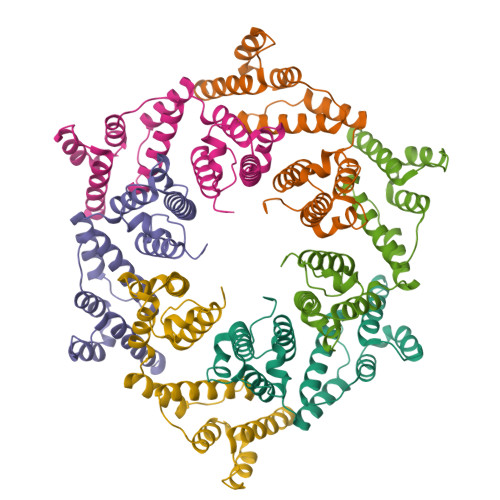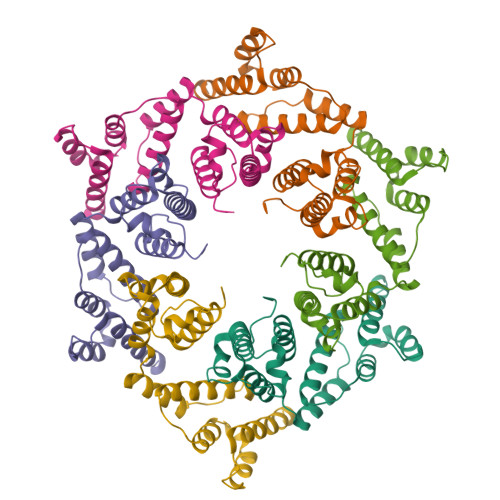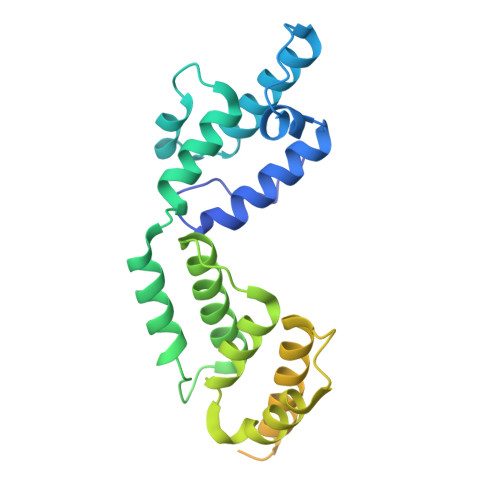Capsid transfer of the retrotransposon Copia controls structural synaptic plasticity in Drosophila.
M'Angale, P.G., Lemieux, A., Liu, Y., Wang, S., Zinter, M., Alegre, G., Simkin, A., Budnik, V., Kelch, B.A., Thomson, T.(2025) PLoS Biol 23: e3002983-e3002983
- PubMed: 39964983
- DOI: https://doi.org/10.1371/journal.pbio.3002983
- Primary Citation of Related Structures:
8VVW, 8VVZ, 8VW3, 8VWG - PubMed Abstract:
Transposons are parasitic genome elements that can also serve as raw material for the evolution of new cellular functions. However, how retrotransposons are selected and domesticated by host organisms to modulate synaptic plasticity remains largely unknown. Here, we show that the Ty1 retrotransposon Copia forms virus-like capsids in vivo and transfers between cells. Copia is enriched at the Drosophila neuromuscular junction (NMJ) and transported across synapses, and disrupting its expression promotes both synapse development and structural synaptic plasticity. We show that proper synaptic plasticity is maintained in Drosophila by the balance of Copia and the Arc1 (activity-regulated cytoskeleton-associated protein) homolog. High-resolution cryogenic-electron microscopy imaging shows that the structure of the Copia capsid has a large capacity and pores like retroviruses but is distinct from domesticated capsids such as dArc1. Our results suggest a fully functional transposon mediates synaptic plasticity, possibly representing an early stage of domestication of a retrotransposon.
Organizational Affiliation:
Department of Neurobiology, University of Massachusetts Chan Medical School, Worcester, Massachusetts, United States of America.


















